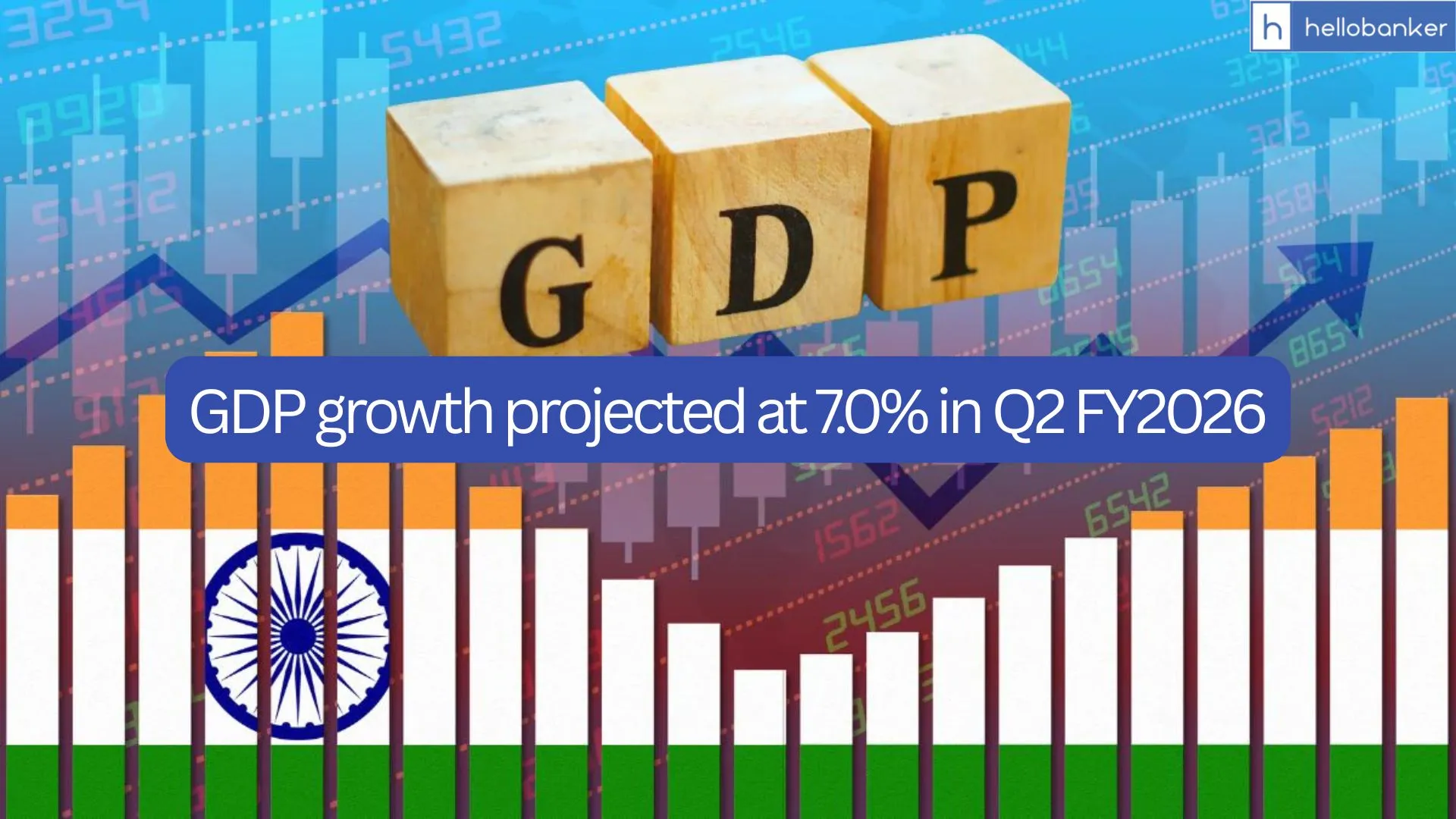Rating agency ICRA has said that India’s GDP growth for the July–September quarter of FY26 is expected to ease to 7%, down from 7.8% in the previous quarter. The agency said that government spending slowed during the quarter, and this likely affected overall economic activity. While services and agriculture are expected to lose some momentum, the industrial sector is likely to show strong improvement due to better performance in manufacturing, construction, and favourable base effects.
ICRA also expects Gross Value Added (GVA) growth to soften to 7.1%, compared to 7.6% in Q1 FY26. The slowdown is mainly because the services sector is likely to grow at 7.4%, down from 9.3%, and agriculture GVA is expected to rise only 3.5%, slightly lower than 3.7% in Q1. These weaker trends are expected to offset the positive momentum in the industrial sector, which is projected to grow at a five-quarter high of 7.8%, up from 6.3% in Q1.
Trends in Government Expenditure (GoI + 22 States)
(₹ Trillion)
Non-interest revenue expenditure
| Category | Q1 FY2025 | Q2 FY2025 | Q1 FY2026 | Q2 FY2026 | YoY Q1 FY2026 | YoY Q2 FY2026 |
|---|---|---|---|---|---|---|
| GoI | 5.2 | 6.6 | 5.6 | 5.8 | 6.9% | -11.2% |
| States* | 7.1 | 8.0 | 7.9 | 8.5 | 10.9% | 5.3% |
Capital expenditure
| Category | Q1 FY2025 | Q2 FY2025 | Q1 FY2026 | Q2 FY2026 | YoY Q1 FY2026 | YoY Q2 FY2026 |
|---|---|---|---|---|---|---|
| GoI | 1.8 | 2.3 | 2.8 | 3.1 | 52.0% | 30.7% |
| States* | 0.9 | 1.7 | 1.1 | 1.6 | 23.2% | -4.6% |
Data includes 22 states; excludes Arunachal Pradesh, Bihar, Goa, Himachal Pradesh, Manipur, and Nagaland.
Source: CGA, CAG, GoI, ICRA Research.
ICRA expects net indirect taxes to decline in Q2 FY26 on a year-on-year basis, after a strong 9.5% rise in Q1. This fall is mainly because the Government of India’s indirect tax collections are estimated to drop 5.2%, compared to an 11.3% increase in Q1. Government subsidies are also expected to contract by 4.6%, a smaller decline than the 7.3% fall seen in Q1. Due to these changes, the gap between GDP and GVA growth is expected to turn slightly negative — around 10 basis points — after being positive at 18 basis points in the previous quarter.
The Government of India’s gross capital expenditure grew 30.7% in Q2 FY26, higher than the 10.3% growth seen in Q2 FY25. However, this increase is lower than the 52% growth recorded in Q1 FY26, mainly because Q2 had a larger base. Despite heavy monsoon disruptions, the Centre’s average monthly capital expenditure increased to ₹1,019 billion in Q2, up from ₹917 billion in Q1.
For the 22 states, combined capital outlay and net lending fell 4.6% year-on-year in Q2 FY26, after growing 7.3% in Q2 FY25. This decline comes after a sharp 23% rise in Q1 FY26, which itself followed a 19.1% contraction in Q1 FY25. The drop in Q2 is mainly because of an unfavourable base effect. Even then, average monthly state capex rose to ₹544 billion in Q2, compared to ₹378 billion in Q1 — though still only half of the Centre’s spending.
The Centre’s non-interest revenue expenditure fell sharply by 11.2% in Q2 FY26, reversing the 6.9% rise in Q1. For the same 22 states, the growth in revenue expenditure also slowed sharply to 5.3% in Q2, down from 10.9% in Q1, indicating a broad decline in revenue spending across both levels of government.
Sector-wise Performance
Services Sector
India’s services exports grew 8.7% year-on-year in Q2 FY26, reaching $101.6 billion. However, this was slower than the 10.1% growth in Q1, marking the slowest pace in six quarters. Because of this and lower government spending, services GVA growth is expected to fall to 7.4%, compared to the eight-quarter high of 9.3% in Q1.
Agriculture Sector
Agriculture performance was mixed. Early monsoon rains helped kharif sowing, but floods in August–September 2025 and untimely rains in October damaged crops and delayed harvesting. Although kharif acreage is higher than last year, the negative base effect is expected to keep agriculture GVA growth at 3.5%, similar to Q1’s 3.7%, and slightly below 4.1% in Q2 last year.
Industrial Sector
The industrial sector is likely to perform strongly. ICRA expects industrial GVA growth to rise to a five-quarter high of 7.8% in Q2, supported by better manufacturing output, strong exports, and higher construction activity.
Manufacturing, measured through the Index of Industrial Production (IIP), recorded a seven-quarter high growth of 4.9%, driven by festive-season inventory stocking and GST cuts. India’s merchandise exports grew 8.9%, reaching $108.5 billion, despite higher US tariffs. Both petroleum exports (+8.1%) and non-oil exports (+9.0%) grew well.
Among non-oil exports, electronic goods surged 34.3%, as they were exempt from tariffs. Other major contributors included gems and jewellery (+13%), agricultural products (+12.6%), pharmaceuticals (+7.8%), and engineering goods (+7.1%). These strong trends, along with a favourable base, are expected to push manufacturing GVA growth to a six-quarter high of 9%, compared to just 2.2% in Q2 FY25.
Construction, Mining, and Electricity
Construction activity stayed strong despite monsoon disruptions, supported by higher government capital spending and better infrastructure output. ICRA expects construction GVA to rise slightly to 8% in Q2, compared to 7.6% in Q1. Mining and electricity are also likely to show better performance due to favourable base effects, though overall growth in these sectors will remain modest.
Download Report PDF (This PDF is available for Premium Users Only. Click here to join premium)
